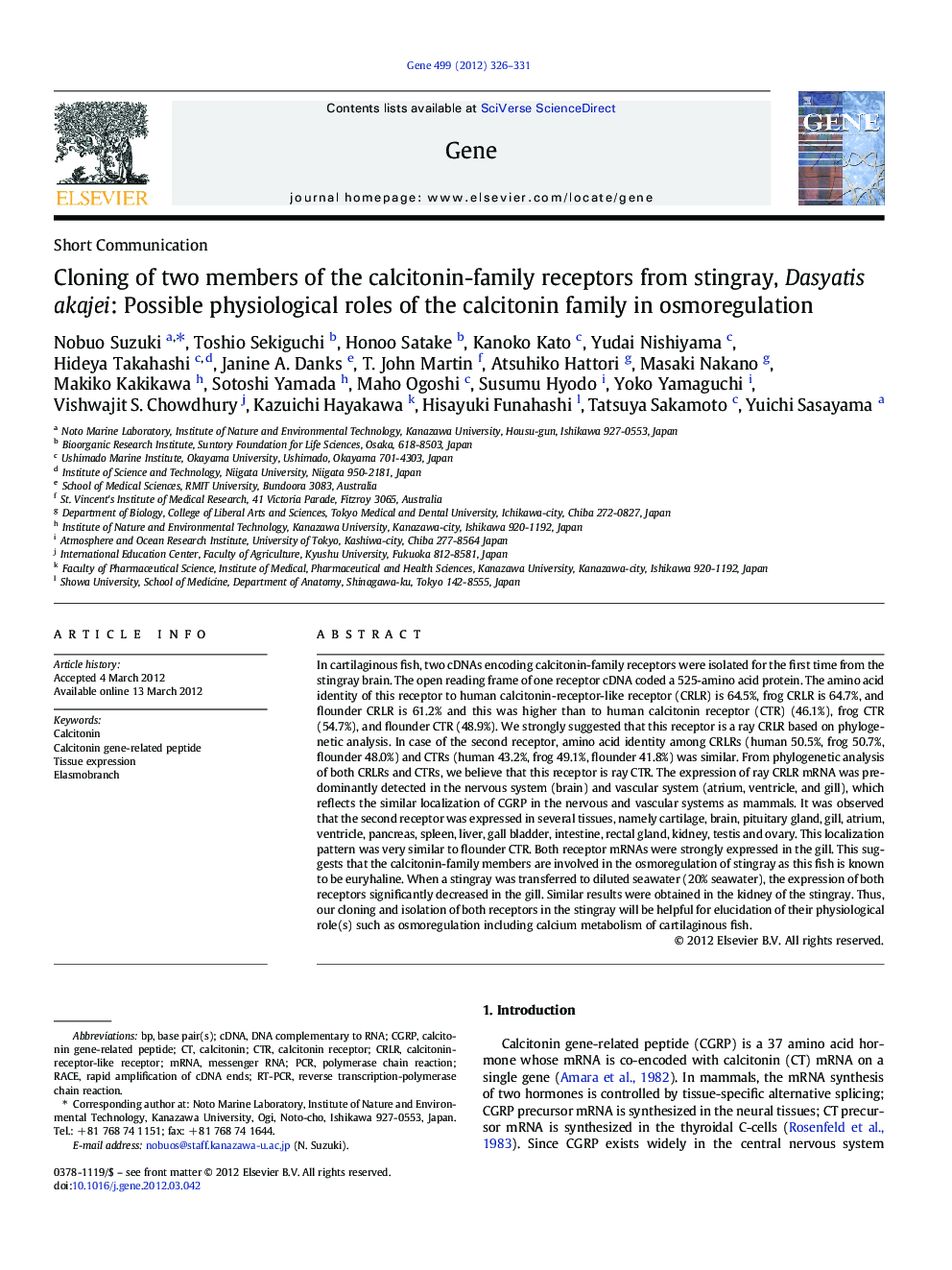| کد مقاله | کد نشریه | سال انتشار | مقاله انگلیسی | نسخه تمام متن |
|---|---|---|---|---|
| 2817905 | 1160018 | 2012 | 6 صفحه PDF | دانلود رایگان |

In cartilaginous fish, two cDNAs encoding calcitonin-family receptors were isolated for the first time from the stingray brain. The open reading frame of one receptor cDNA coded a 525-amino acid protein. The amino acid identity of this receptor to human calcitonin-receptor-like receptor (CRLR) is 64.5%, frog CRLR is 64.7%, and flounder CRLR is 61.2% and this was higher than to human calcitonin receptor (CTR) (46.1%), frog CTR (54.7%), and flounder CTR (48.9%). We strongly suggested that this receptor is a ray CRLR based on phylogenetic analysis. In case of the second receptor, amino acid identity among CRLRs (human 50.5%, frog 50.7%, flounder 48.0%) and CTRs (human 43.2%, frog 49.1%, flounder 41.8%) was similar. From phylogenetic analysis of both CRLRs and CTRs, we believe that this receptor is ray CTR. The expression of ray CRLR mRNA was predominantly detected in the nervous system (brain) and vascular system (atrium, ventricle, and gill), which reflects the similar localization of CGRP in the nervous and vascular systems as mammals. It was observed that the second receptor was expressed in several tissues, namely cartilage, brain, pituitary gland, gill, atrium, ventricle, pancreas, spleen, liver, gall bladder, intestine, rectal gland, kidney, testis and ovary. This localization pattern was very similar to flounder CTR. Both receptor mRNAs were strongly expressed in the gill. This suggests that the calcitonin-family members are involved in the osmoregulation of stingray as this fish is known to be euryhaline. When a stingray was transferred to diluted seawater (20% seawater), the expression of both receptors significantly decreased in the gill. Similar results were obtained in the kidney of the stingray. Thus, our cloning and isolation of both receptors in the stingray will be helpful for elucidation of their physiological role(s) such as osmoregulation including calcium metabolism of cartilaginous fish.
► Two calcitonin-family receptors were isolated from cartilaginous fish.
► Both receptor cDNAs were expressed in several tissues.
► Expression of receptors in the gill and kidney was decreased in diluted seawater.
Journal: Gene - Volume 499, Issue 2, 15 May 2012, Pages 326–331